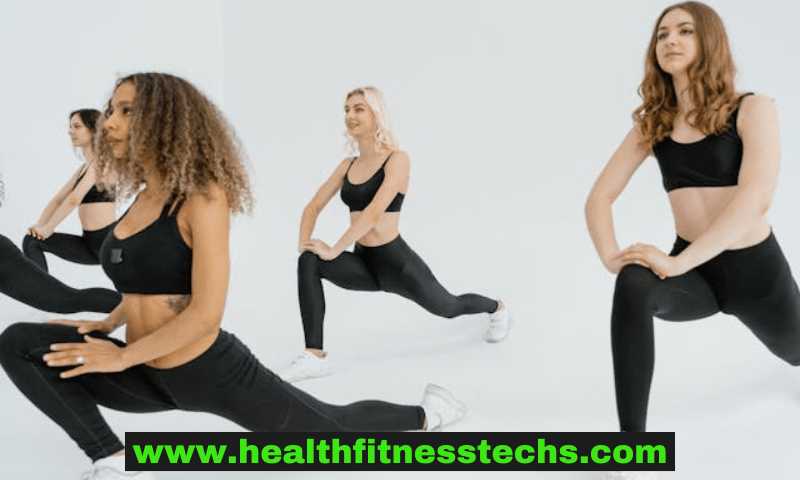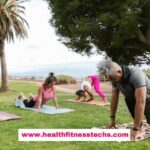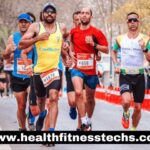Pilates exercises ! Pilates is method of exercise.. that was.. that was developed in early 20th century by Joseph Pilates in early 20th century has seen enormous popularity in recent times. low impact workout system is focused on strengthening muscles of core increasing flexibility and general body awareness.
What is Pilates?
Pilates is blend of elements of ballet yoga & calisthenics. emphasis is on accuracy control and breathing coordination. Pilates exercises usually are done on mats.. that are specially made or reformer equipment however it is also possible to do them without apparatus. fundamental principle of Pilates are:
- The core strength of Pilates is great exercise for abdominal muscles back muscles and pelvic floor. It provides an incredibly solid base for general stability and stability.
- Flexibility Exercises like Pilates stretch out and strengthens muscles while expanding mobility and flexibility.
- Awareness of body: Pilates encourages profound understanding of your posture and movements of body which helps prevent injury and boost posture.
- Breath control Pilates encourages breath control and deep breathing which helps lessen stress levels and boost overall health and well being.
Benefits of Regular Pilates Practice
Regular Pilates training can bring wealth of advantages for both mental and physical well being such as:
- Increased flexibility and strength: Pilates helps to improve strength of core muscles as well as increase flexibility. This outcome in improved overall performance.
- Enhanced postural alignment: Pilates can help fix postural imbalances as well as rise alignment of your body which can reduce inflammation and pain.
- Back pain relief: Pilates is great way to ease back pain by strengthening muscles of core and increasing flexibility of your spine.
- Enhances coordination and balance Pilates exercises can enhance balance and coordination of person while minimizing chance of falling as well as injury.
- Stress reduction Pilates is great way to alleviate anxiety and stress by encouraging relaxation and mindfulness.
- Increased confidence When you collect strength flexibility and body awareness by Pilates it is possible to feel boost in confidence as well as self confidence.
Who Can Profit From Pilates Exercises?
Pilates will be appropriate for anyone who are of any age as well as fitness levels. No matter if youre an accomplished fitness enthusiast or youre just beginning your fitness process Pilates can offer significant advantages. few groups.. that could specifically benefit from Pilates are:
- Rehabilitation It can serve as an excellent method for recovery after operations or injuries as it is focused on soft movements and strengthening core.
- Women who are postpartum: Pilates can help to strengthen pelvic floor muscles & help improve core stability following pregnancy.
- Seniors Pilates program can boost balance flexibility and strength for older adults decreasing likelihood of falls & also promoting healthy ageing.
- athletes: Pilates can enhance athletic performance as well as prevent injuries for athletes in all sports.
- Patients with chronic ailments: Pilates can help combat conditions like osteoporosis and arthritis as well as chronic painfulness.
The Foundation of Pilates Practice
Pilates is an workout.. that concentrates on strengthening core muscles strengthening flexibility & improving general body awareness. For accurate results from your Pilates training its important to be aware of basic elements and tools involved.
Core Principles
Pilates is based upon six fundamental principles.. that govern every move:
- Breathing good breathing technique is essential for Pilates. Take deep breath through your nose and then expand rib cage both laterally and in posterior. Inhale slowly from your mouth engaging your core muscles while drawing your navel closer to spine. coordinated breathing patterns help connect core as well as increase overall stability.
- Centralization: center also known as “powerhouse” refers to muscles of core which includes those in abdomen such as obliques transverse abdominis as well as pelvic floor muscles. Pilates exercises are designed to increase strength and engagement of core and grant solid basis for all of body.
- Concentration Pilates demands mental concentration and concentration. Be aware of specifics of every movement ensuring.. that you align your body properly and utilizing correct muscles. Focusing on your body increases awareness as well as improves your technique.
- Control Pilates program emphasizes control actions which means avoiding abrupt or uncontrolled movements. Take your time and move slowly with focus on accuracy and precision. This helps avoid injuries and enhances muscles engagement.
- Accuracy: Pilates exercises are done with precision and dedication to details. Find right alignment for your body to maintain your posture and use appropriate muscles. With this precision youll be making most of every movement.
- flow: Exercises in Pilates are executed in fluid and constant manner. Do not stop or pause between exercises while maintaining steady movement throughout exercise. This assists to increase coordination balance and body awareness overall.
Essential Equipment
Although Pilates can be performed on mat together reformer or specific equipment may enhance practice as well as grant extra challenges.
HTML0 Mat in contrast to. Reformer
- Mat Pilates: This is most fundamental form of Pilates practiced on mat without extra apparatus. Its appropriate for beginners and offers an array of exercises to concentrate on various muscles.
- Reformer Pilates Reformers are special piece of equipment.. that utilizes springs and motor to favor resistance & to challenge muscles. reformer offers wide range of exercise options and is suitable for advanced and intermediate practitioners.
Props and Accessories
Alongside reformer and mat Pilates instructors often make use of equipment and props to help enhance their exercises. This could be:
- Magic Circle: circular object.. that targets inner thighs core and arms.
- Small Ball: Small ball utilized to increase strength of your core and improve stability.
- Foam roller cylindrical device employed for self massage massage myofascial release as well as stretching.
-
Bands of resistance: Elastic bands used for resistance in Pilates exercises.
Choosing Right Equipment for Beginners
If youre still new to Pilates beginning with mat Pilates can be fantastic opportunity to begin learning fundamentals as well as build endurance and ability. After youve learned basics then you might want to think about trying reformer Pilates or adding props and equipment to your workout.
It is important to select equipment appropriate for fitness levels and objectives. You should consider consulting an Pilates instructor to receive specific suggestions.
Read Also :Comprehensive Guide to Balanced diet: Fueling Your Body
Starting with Mat Pilates Mat Pilates
Mat Pilates is low impact workout.. that is focused on strengthening core muscles strengthening flexibility & improving general body awareness. In order to begin in Mat Pilates it is crucial to know correct posture alignment as well as basics of posture.
Proper Form and Alignment
Basic position:
- A neutral spine Create an organic curve to your spine. Beware of overly flattening or arching.
- Pelvic tilt Maintain your pelvis at neutral angle not tucked in or inclined forward.
- Core engagement Connect your core muscles through exercise.
- Control of breath: Breathe in steady and deep way during each workout.
The most common mistakes to avoid
- Breathing in: This can rise blood pressure & also restrict oxygen flow to your muscles.
- . that are stretched too far: Avoid hyperextending your elbows knees or wrists.
- Compensation with different muscles: emphasis on together appropriate muscles for every exercise.
HTML0 Considerations regarding safety:
- Pay attention to your bodys signals: If you feel an injury stop your exercise immediately and seek advice of medical competent.
- Modify exercises as required: If you have an injury or limitation modify exercises according to your capabilities.
- Beware of strain.. that is too intense: Gradually rise amount of exercise you do in order to reduce risk of injury.
Warm up Exercises
Prior to beginning with your Mat Pilates routine its essential to warm your muscles. Here are some warming exercises.. that can help you get to get started:
- Hundred:
- Lay on your back while keeping your knees bent. Place your feet placed flat on floor.
- Your arms should be pumped up and down in tiny circles and keep your shoulders at comfortable level.
- Inhale for five times Exhale for five times & repeat for 100 times.
Breathing Pattern: Inhale as you move your arms upwards then exhale while you bring them back down.
Modifications for beginners:
- Reducing repetition rate.
- Maintain your feet on ground.
Advanced variants:
- Get your legs up off floor while you move your arms.
- Include leg extension after exhale.
- Roll Ups:
- Relax on your back and lie down with arms stretched upwards and legs straight.
- Breathe in and lift your shoulders head as well as your upper body off ground.
- Inhale & then reach hands of your feet.
- Inhale then roll back until you are in sitting position.
Proper technique:
- Involve your core muscles all through workout.
- Avoid rounding your back.
- Keep your legs straight but not locked.
Common challenges:
- The difficulty is lifting your arms off of floor.
- Then youll lose control over your head and neck.
Steps in progressive direction:
- Begin by lifting your shoulders and head.
- Then add your upper back. lower back.
- Finally you should try reaching your toes with your feet straight without bent knees.
Core Strengthening Series
- Single Leg Circles:
- Lay on your back with your knees bent & feet laid flat on ground.
- Stretch one leg out and trace circles by together your foot.
- Maintain your core in place and keep lower back is pressed on floor.
Control of building:
- Begin with smaller circles & slowly rise dimensions.
- You can alternate legs or alter direction of circles.
Advanced variants:
- Lift your leg above flooring.
- You can also add leg extension or leg lift to highest point of circle.
- Rolling Like Ball:
- Place your mat on floor with your knees bent & feet placed flat on floor.
- Connect your fingers between your thighs. Lean towards back bit.
- You can rock back and forth together your muscles in core to maintain your balance.
The balance and coordination
- Engage your core and try to avoid with hands for assistance.
- Try rocking back and forth at various speed.
Benefits of massage therapy:
- The motion of rolling like ball could assist in massage and mobilizing your spinal.
Formula suggestions:
- Make sure your head is in neutral posture.
- Be careful not to arch your back too much.
- Single Leg Stretches:
- Relax on your back and lie down while keeping your knees bent. Place your feet with your back flat on ground.
- Reach out with one leg then grasp for your toes.
- Engage your core and keep lower back is remains pressed against your mat.
The core engagement
- Do not with hands of your arms to drag your legs toward your chest.
- attention on bringing core muscle to help lift your leg.
Coordination of breathing:
- Breathe in when you reach for your toes. Exhale while you reduce your lower leg.
Advanced variations of HTML0:
- Extend both legs simultaneously.
- You can add leg lift or leg extension at very top of your stretch.
Intermediate Mat Work
- Double Leg Stretches:
- Lay on your back with your knees bent & feet placed flat on floor.
- Stretch both legs out and grasp for your feet.
- Engage your core and keep lower back is kept pressed against mat.
Full Body Integration:
- The exercise is challenging your whole body which includes core legs and your back.
Control and flow:
- Try to move smoothly and with control you need to extend and lower your legs.
Advanced alternatives:
- You can add leg lift or leg extension near top of your stretch.
- Spine Stretch Forward:
- Place your feet on mat and keep your legs extending in direction of your.
- Begin to reach forward with your feet towards ceiling Keep your spine straight.
- Maintain your core in good position and dont round your back.
Benefits of Flexibility:
- The exercise will stretch calves hamstrings as well as your back.
Proper alignment:
- Maintain your spine in straight line and try to avoid over extending your shoulders.
Common changes:
- Relax your knees bit to loosen your muscles of hamstrings.
- Saw:
- You can sit on mat with your legs stretched out towards front.
- Your torso should be turned to right then move your left foot for your left foot.
- As you twist your body inhale and exhale after returning to your center.
Rotation technique:
- You should rotate your whole torso not only your shoulders and head.
Stretching benefits:
- This workout will stretch shoulders spine & hips.
Instructions for completing form:
- Make sure your back is straight and try to avoid rounding your shoulders.
- Do not with arm muscles to force your body into twist.
Following these rules and regularly practicing and regularly you will build strength and flexibility of your body with Mat Pilates. Be aware of your bodys needs alter exercises when necessary to reap advantages from this exercise routine.. that is effective.
Advanced Pilates Movements
9. Open Leg Rocker
Open Leg Rocker Open Leg Rocker is difficult Pilates exercise.. that calls for stability balance as well as ability to move.
Balancing development: This exercise challenges your balance while you move around on your tailbone while keeping your legs wide.
Essential strength needs: Your core muscles such as your abdominals transverse abdominis & obliques are incredibly engaged to support your body and keep lower back from arching.
Safety concerns: It is important to keep good form and to avoid stretching lower part of your back. If you experience any discomfort you are experiencing pain stop exercising immediately.
10. Corkscrew
The Corkscrew is sophisticated Pilates workout.. that demands shoulder to be stable core control as well as spinal flexibility.
Advanced core control This workout engages core muscles in active manner while you bend your torso twist and twist your spine.
Shoulder stability Shoulders must be in stable position to minimize tension or discomfort.
Modification alternatives: If you find it difficult to complete whole Corkscrew to do try modifying exercise by keeping your legs close or bent your knees.
Lower Body attention
11. Single Leg Kicks
Single Leg Kicks are an excellent workout for activating your hamstrings as well as strengthening lower back muscles.
Hamstring engagement Hamstrings are active working as you raise your leg then kick at ceiling.
Lower back stabilization lower back muscles need to be strong sufficient to stop any pain arching or tension.
Progression advice: As you get stronger you will be able to rise intensity of your kicks or use resistance bands for an exercise.. that is more demanding.
12. Double Leg Kicks
Double Leg Kicks are an sophisticated version from Single Leg Kicks which require an extension of back coordination and endurance.
Back extension This workout expands your spine and could aid in rise flexibility and posture of your body.
Coordinating: You must coordinate your movement so.. that your legs remain straight as well as avoid rocking between your legs.
Advanced variants: You can add ankles with resistance bands or do double Leg Kicks with your back for an even more difficult training.
Upper Body Strengthening
13. Push Ups
The Push Up is well known exercise which can be adapted in Pilates to work upper muscles of your body.
Pilates variant technique: In Pilates push ups are usually done using your hands closer to each other with your elbows pulled back toward body. This form of exercise targets your chest muscles and triceps.
The upper bodys alignment Its crucial to ensure an appropriate alignment throughout your workout by keeping your body in an erect direction from your head up to your feet.
Gaining strength gradually When you are finding traditional Push Ups difficult You can alter their form by doing exercises on your knees or in wall.
14. Swimming
Swimming is an enjoyable and challenging method to build your back strength as well as rise coordination.
Back Strengthening: This exercise targets back muscles which includes your rhomboids as well as latissimus.
Coordinate development: You must be able to coordinate your leg and arm moves to complete exercise definitely.
Breathing Pattern: Its important to ensure.. that you breathe properly throughout exercise. Inhaling when you move your arms in front while exhaling as you draw your arms back.
15. Seal
Seal Seal is fun and demanding Pilates exercise.. that demands stability control and flexibility of spine.
Balance and control Balance and control: your hands and move your hips forward and back.
Mobility of spine: This training will require flexibility in spine while you move your hips upwards and downwards.
Variations.. that are fun and challenging: You can add modifications in Seal by walking your legs around in variety of designs or by incorporating arm motions.


